by W.R. Jacobi * (12/13)
Quick Facts…
- Five fungi cause most foliage diseases on aspen, cottonwoods and other poplar species.
- Foliage diseases develop readily in wet, cool weather.
- Foliage diseases decrease a tree’s aesthetic value and can cause premature defoliation.
- Severe outbreaks can affect tree growth and reduce defense capabilities of the tree.
- To reduce future disease problems, rake up and dispose of leaves and prune out branches with cankers.
- Timing of fungicide applications to prevent infections is critical.
Foliage diseases can reduce the aesthetic value of aspen and cottonwood. Occasionally, a severe disease outbreak causes premature defoliation or dieback of parts of the tree.
If a tree loses its leaves early in the season, it may grow new ones and its health is not seriously affected. If it loses them in midsummer, however, growing new leaves may prevent the tree from fully hardening off before cold weather or reduce the amount of stored food. This leads to increased danger of frost damage, reduced growth, and predisposition to other diseases or insects. If the tree loses its leaves late in the season, it will not grow new ones or lose much vigor.
Marssonina Leaf Spot
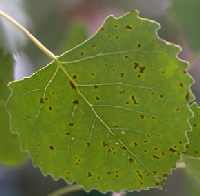
Figure 1: Marssonina leaf spot on cottonwood. |
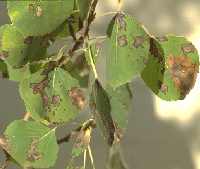
Figure 2: Marssonina leaf spot on aspen, late symptoms. |

Figure 3: Septoria leaf spot showing tan circular spots. |

Figure 4: Septoria leaf spot showing irregular brown to black spots. |

Figure 5: Ink spot disease on aspen in early summer. |
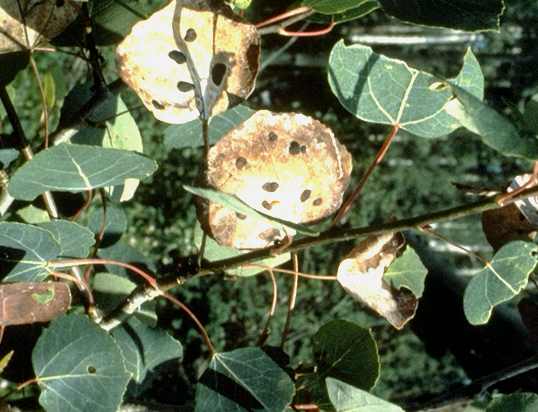
Figure 6: Ink spot disease on aspen in midsummer. |
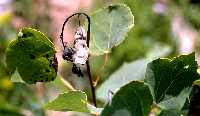
Figure 7: Shoot blight on aspen showing black and curled stem. |
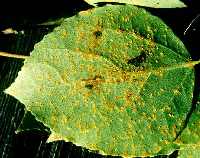
Figure 8: Leaf rust. |
The fungus Marssonina causes the most common foliage disease on aspen and cottonwoods in urban and forested areas of Colorado.
Marssonina leaf spots are dark brown flecks, often with yellow halos (Figure 1). Immature spots characteristically have a white center. On severely infected leaves, several spots may fuse to form large black dead patches in late summer (Figure 2). Spots also may develop on leaf petioles and succulent new shoots.
Marssonina survives the winter on fallen leaves that were infected the previous year (Figure 9). With spring and warmer, wet weather, the fungus produces microscopic spores that are carried by the wind and infect emerging leaves. Early infections are rarely serious, but if the weather remains favorable, spores from these infections can cause a widespread secondary infection. Heavy secondary infections become visible later in the growing season and cause premature leaf loss on infected trees.
Septoria Leaf Spot
The fungus Septoria causes a common foliar disease mainly on cottonwoods and occasionally aspen in urban areas of Colorado.
The appearance of Septoria leaf spots varies considerably between tree species and with time. Symptoms include, in early summer, a distinct tan circular spot with black margins and small black fruiting bodies in the center (Figure 3), and finally in late summer, irregular brown to black spots that coalesce into large areas (Figure 4).
The disease is rarely a problem on plains and eastern cottonwoods but can cause defoliation at least a month early and visual quality loss on lanceleaf cottonwoods. In wetter climates, another species of the fungus also causes cankers on twigs and main stems.
Septoria survives the winter on fallen leaves that were infected the previous year (Figure 9). With spring and warmer, wet weather (70 to 75 degrees F), the fungus produces microscopic spores that are carried by the wind and infect emerging leaves. Early infections are rarely serious. If the weather remains favorable, spores from these infections can cause a widespread secondary infection. Heavy secondary infections become visible later in the growing season and cause premature leaf loss on infected trees.
Ink Spot of Aspen
The fungus Ciborinia causes a leaf disease of aspen commonly known as ink spot. It is found mainly in the mountains of Colorado.
The first symptoms of ink spot appear in late spring to early summer as tan to brown areas on the upper leaf surfaces. Concentric, discolored ring patterns may become visible as the fungus advances through the leaf (Figure 5). These concentric patterns can be confused with leafminer attacks. Infected leaves may be totally brown by midsummer, while adjacent uninfected leaves remain green. Raised black bodies begin to appear on affected brown leaves. These hard masses of fungal material (sclerotia) are oval and nearly 1/4 inch long. These are the “ink spots” that give the disease its common name (Figure 6). In late summer, these spots may fall out, leaving a characteristic “shot hole” effect on leaves that remain on the tree. This disease is especially prevalent in dense aspen stands. Early season defoliation may reduce growth.
The sclerotia that fall from infected leaves are the overwintering stage of the fungus. Wet spring weather stimulates fruiting bodies to form from the sclerotia and produce spores. Spores are blown and splashed from the ground to developing leaves.
Leaf and Shoot Blight
Leaf and shoot blight, caused by the fungus Venturia, is a disease affecting young aspen and cottonwood tissue primarily in the mountains.
In the spring, symptoms first become visible on leaves near shoots infected the previous season. Brown to blackened, irregularly shaped areas spread through the leaves, causing them to dry and become distorted. Typically, the fungus spreads down through the succulent new shoot, causing cankers that blacken and curl the not yet strengthen (lignified) stem tip until it resembles a shepherd’s crook (Figure 7). Death of new shoots causes distorted, shrubby growth.
The leaf and shoot blight fungus survives the winter mainly on shoots infected the previous season. Spores are windblown early in the season and infect newly expanding leaves and shoots. As the season progresses, uninfected tissue becomes more resistant to the disease.
Leaf Rusts
A rust disease caused by the fungus Melampsora is often seen on aspen and cottonwood. Though common, this disease rarely causes serious damage to trees since the disease develops late in the summer/fall and rarely causes early defoliation. The disease damages leaves after most photosynthetic needs for the tree are completed.
The disease is easily recognized by small, yellow-orange pustules that are scattered on the lower leaf surfaces (Figure 8). These orange pustules are most visible in late summer and early fall.
The life cycle of this fungus requires two different tree hosts. During wet spring weather, spores are released from the fungus, which has overwintered on fallen cottonwood or aspen leaves. These spores infect evergreen needles, such as Douglas-fir, pine, fir or spruce, where they cause little damage. After two to three weeks, spores are produced on these evergreen hosts and are blown to aspen or cottonwood leaves. Once the rust is established on aspen or cottonwood hosts, it can multiply rapidly under favorable wet conditions throughout the summer. Several years of heavy infections can cause some growth losses, especially on younger trees. Fallen infected leaves shelter the fungus until the next year’s disease cycle.
Disease Management
Tree resistance is the best way to prevent foliar diseases. Several poplar hybrids or species are resistant to one or more of these diseases. Ask your local nursery for a resistant variety. Some aspens are resistant to leaf spots, but aspen production methods make it difficult to select trees for resistance.
Sanitation is an effective control for some foliar diseases. Fall removal of infected leaves, twigs and branches can reduce the amount of disease the next spring. Raking and destroying infected leaves can reduce Marssonina and Septoria leaf spot, ink spot and leaf rust. The shoot blight fungus overwinters in diseased stems and twigs, so it can be pruned out to reduce new infections.
Keep leaves as dry as possible to reduce the incidence of leaf spots:
- Irrigate in early morning so leaves can dry out.
- Keep sprinkler patterns adjusted so leaves don’t stay wet.
- Space trees apart to reduce humidity to help prevent leaf diseases.
Fungicide sprays are not normally needed but if applied early enough, can prevent foliage diseases. Spraying will prevent only new infections; it will not cure leaves already infected. If an infection is developing on particularly valuable trees, or if there is good reason to believe an infection is imminent, the trees can be sprayed with fungicides. Trees that perennially have foliar diseases should be sprayed at bud break and then two or three times during the growing season at 12- to 14-day intervals. Check fungicide labels carefully since allowable uses and rates can change. Fungicides labeled for leaf spots should work well for all these diseases except for the rusts since they are in a different fungal group. Other fungicides may be required for rust diseases. Please follow label rates and directions when applying. Check with your Colorado State University Extension county office or Colorado State Forest Service district forester for specific fungicide recommendations.
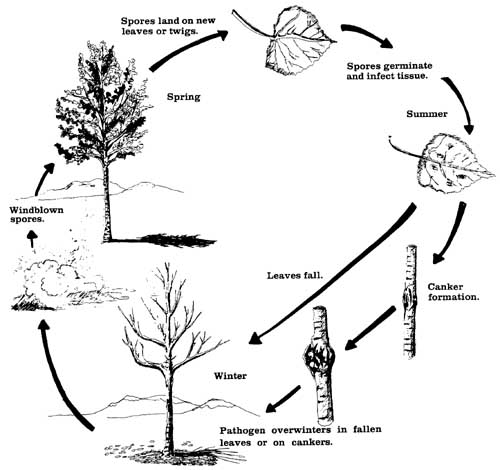
Figure 9: Generalized disease cycle of aspen and poplar leaf spots. Cankers form on trees with shoot blight only. |
Trees and shrubs – the backbone of your landscapeTrees and shrubs add year-round structure, beauty and texture to Colorado landscapes. They can attract wildlife and protect your home and yard from wind and sun. To get the most from them, see our many fact sheets on:
Address: 115 General Services Bldg. Colorado State University Fort Collins, CO 80523-4061 Phone: (970) 491-6198 Toll-free: (877) 692-9358 Fax: (970) 491-2961 |
*Colorado State University professor, bioagricultural sciences and pest management. 2/99. Revised 12/13.
Colorado State University, U.S. Department of Agriculture and Colorado
counties cooperating. Extension programs are available to
all without discrimination. No endorsement of products mentioned is intended
nor is criticism implied of products not mentioned.
Go to top of this page.





